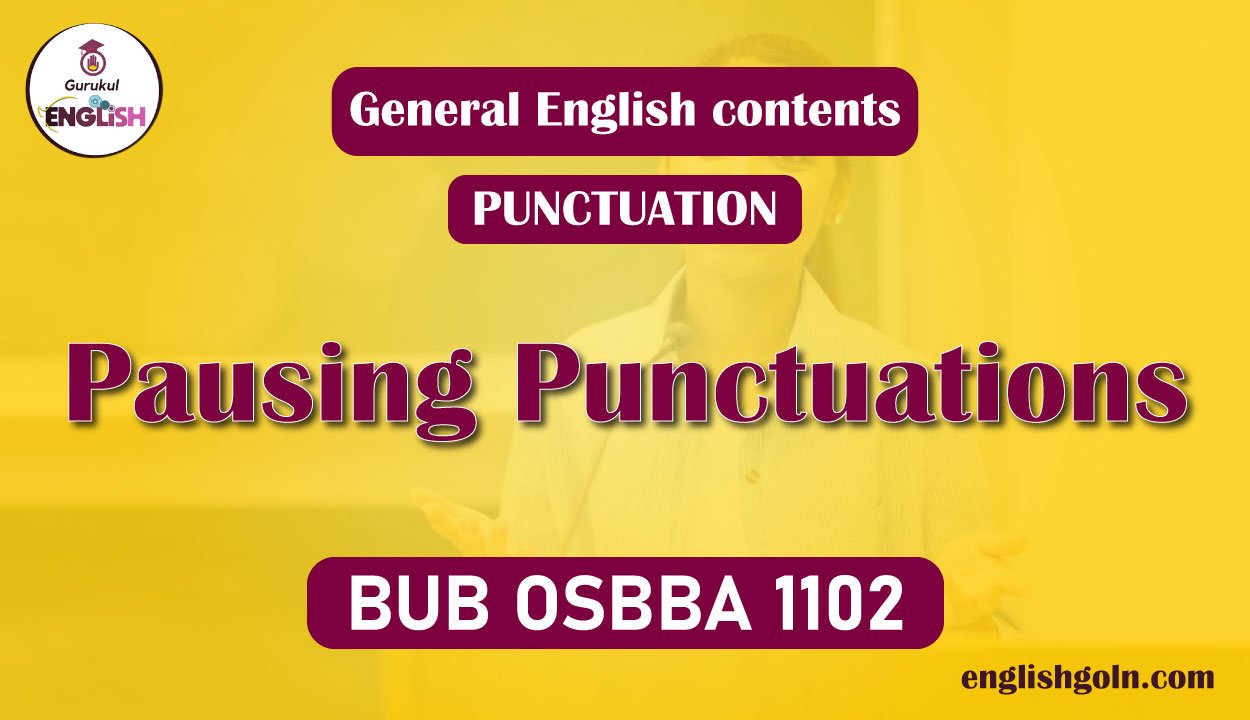Today is our topic of discussion – Pausing Punctuations
Pausing Punctuations

Pausing Punctuations
Commas (.)
The comma is used to show a separation of ideas or elements within the structures of a sentence. Additionally, it is used in numbers, dates, and letter writing after the salutation and closing.
- Direct address: Thanks for all your help. John.
- Separation of two complete sentences: We went to the movies, and then we went out to lunch.
- Separating lists or elements within sentence: Suzi wanted the black, green, and blue dresses.
Whether to add a final comma before the conjunction in a list is a matter of debate. This final comma is known as an Oxford or serial comma. It is useful in the complex series of elements or phrases but is often considered unnecessary in a simple series such as in the example above. It usually comes down to a style choice by the writer.

Colon and semicolons (:), (;)
We use colons to introduce lists:
There are three main reasons for the success of the government: economic, social and political.
We also use colons to indicate a subtitle or to indicate a subdivision of a topic:
Life in Provence: A Personal View
We often use colons to introduce direct speech:
Then he said: ‘I really cannot help you in any way.”
We commonly use a colon between sentences when the second sentence explains or justifies the first sentence:
Try to keep your flat clean and tidy: it will be sold more easily.
We use semi-colons instead of full stops to separate two main clauses. In such cases, the clauses are related in meaning but are separated grammatically.

Spanish is spoken throughout South America; in Brazil, the main language is Portuguese, Semi-colons are not commonly used in contemporary English. Full stops and commas are more common.
